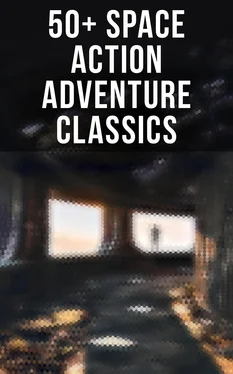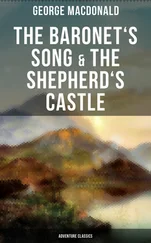Except for the fundamentally important fact that these Fascisti were intensely nationalist, this control by a self-appointed, self-disciplined élite was a distinct step towards our Modern State organization. These various Fascisti were destined to destroy their own states and disappear because of their essentially shallow and sentimental mentality, their inability to get outside nationalist traditions and coalesce; there is no direct continuity between them and our modern educational and administrative system; but there was nothing like them in the World War of 1914-18 anywhere, and they are noteworthy, as the Russian Communist Party (in spite of its proletarian formula) is noteworthy, for their partial but very real advance on democratic institutions. Amidst the chaos, that organized “devotion of the young” on which our modern community rests was clearly foreshadowed in these Central European states. The idea of disciplined personal participation in human government was being driven into the mentality of the new generation.
Until something more convincing appeared, it had to crystallize, disastrously enough, about such strange nuclei as the theatrical Mussolini and the hysterical Hitler. It had to be patriotic because that was the only form in which the State then presented itself. But after these first crystallizations had been shattered and dissolved in the war disasters that now ensued, the idea was still there, this idea of banded cooperation ready to be directed to greater ends. Youth had ceased to be irresponsible in all the Fascist countries.
Not only were these new wars unlike their predecessors in the fact that they were not, so far as the Central Powers were concerned, wars of the democratic masses, but also they were quite unprecedented in the range and quality of the fighting. We have already indicated some of the main differences between the New Warfare and the Old. These now became accentuated by the extraordinary way in which the boundaries of the battling states interdigitated. In the first spurt of conflict there was indeed a “front” between Poland and Germany; but after 1943 there was no front, no main objective, and no central idea to the storming destruction that spread over Europe.
The Poles tried to draw a line of Permanent Death Gas across East Brandenburg before their withdrawal to Posen, but their collapse came too swiftly, and they were able only to poison three small areas of no strategic importance. After 1943 the war became mainly a war in the air, with an increasing use of gas and landing raids, raids rather than invasions, to seize, organize and hold advantageous positions. A bitter and intense naval struggle went on in the Mediterranean to cut off reinforcements and supplies between North Africa and France, but there was little molestation of the Atlantic traffic of France.
There was never an Aerial Trafalgar, never an Air Ecnomus. War in three dimensions does not afford those channels, straits, narrow seas, passes, main roads, by which an inferior force may be brought to a decisive battle, and indeed to this day it is uncertain which side was absolutely predominant in the air. It was a war of raids and reprisals, and no large decisive operations were attempted. A big German infantry push into Posen was held by gas and slimes, and a French invasion of Italy got no further than Turin.
The complete exhaustion of the adversary, materially and morally, became the only possible road to any sort of victory. Once more the tormented populations were urged to sustain a “war of attrition”. “It is the man who holds out half an hour longer than the other who wins” was translated into every European language. The attacks on social order increased in malignancy as the impossibility of any military decision became manifest. Crops and forests were deliberately fired, embankments smashed, low-lying regions flooded, gas and water supplies destroyed. The aviators would start off to look for a crowd and bomb it. It became as cruel as the fighting of ferrets.
There was still, in spite of a decade of financial dislocation and industrial depression, a vast amount of mechanical material in Europe; everywhere there were factories strongly protected against air attack and skilfully camouflaged. Moreover, all the chief belligerents had sufficiently open frontiers for the importation of material, so long as anything compact and valuable could be wrung out of their nationals by tax or levy, to pay for such supplies. The goods crossed the frontier at night; the cargoes were piloted into unlit harbours. Every able-bodied adult not actually in the fighting forces was pressed to work at excavations for bomb shelters and the reconstitution of buildings against gas and high explosive. Much of this also was night work. Recalcitrance and shirking were punished by a deprivation of rations. There is a grim picture by Eglon Callet called “Security at Last”, of which the reader may have seen reproductions. A chain gang of emaciated and ragged Frenchmen is working under the lash in a tunnel. In the foreground one who has fainted is being given a stimulant; another, past help, dies untended.
In comparison with the abundant literature of personal experiences in the World War, at least so far as the Western front was concerned, there are remarkably few records either of combatant or non-combatant adventures during the Fighting Forties. The big air raids seem to have been altogether horrible. They were much more dreadful than the air raids of the World War. They began with a nightmare of warning maroons, sirens, hooters and the shrill whistles of cyclist scouts, then swarms of frantic people running to and fro, all pride and dignity gone, seeking the nearest shelter and aid, and they ended for most of their victims in an extremity of physical suffering.
We have already given some intimation of the nature of those torture deaths. In nearly every case the organization of refuges and gas masks broke down. In many cases there had never been a real provision, but only sham visors and sham bomb-proof buildings to allay “premature” panic and “keep up the popular morale”. None of these great raids was ever reported in the newspapers that still struggled on into the war years. Even in America the publication of any detail was treated as “pacificist propaganda against recruiting”.
There is a descriptive letter from Berlin after an air raid, undated and signed “Sinclair”, which is believed by most competent critics to have been written by Sinclair Lewis the novelist (1885-1990). One passage may be quoted:
“We went down Unter den Linden and along the Sieges Allee, and the bodies of people were lying everywhere, men, women and children, not scattered evenly, but bunched together very curiously in heaps, as though their last effort had been to climb on to each other for help. This attempt to get close up to someone seems to be characteristic of death by this particular gas. Something must happen in the mind. Everyone was crumpled up in the same fashion and nearly all had vomited blood. The stench was dreadful, although all this multitude had been alive twenty-four hours ago. The body corrupts at once. The archway into the park was almost impassable. . . . ”
So we get one glimpse of how peaceful town-bred people might die a century and a half ago.
The individual stories of the actual fighting in that last warfare are no more ample than the non-combatant descriptions. There was little inducement for anyone to write about it in the subsequent decades; there was not the same high proportion of literate men as there was in the Western armies during the Great War; there was a less artless interest in what was happening and more running away, desertion, apathy, drunkenness, raping, plundering and malignant cruelty, which are not things of which men leave records. The whole world was less sensitive than it had been thirty years before; if it suffered more grossly it suffered less acutely. In 1914-15 many of the British and German rankers kept diaries from day to day. This shows a sense of personality and a receptiveness to events quite outside the sullen fatalism, shot with gleams of primitive exaltation or fury, which seems to have been the prevalent state of mind in the armies of the Forties.
Читать дальше











